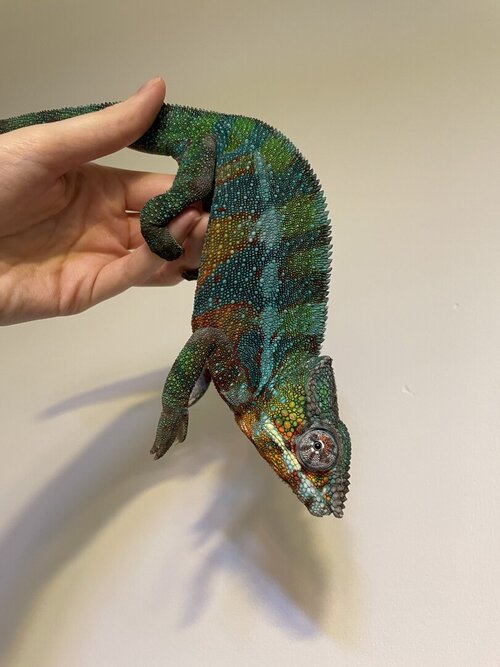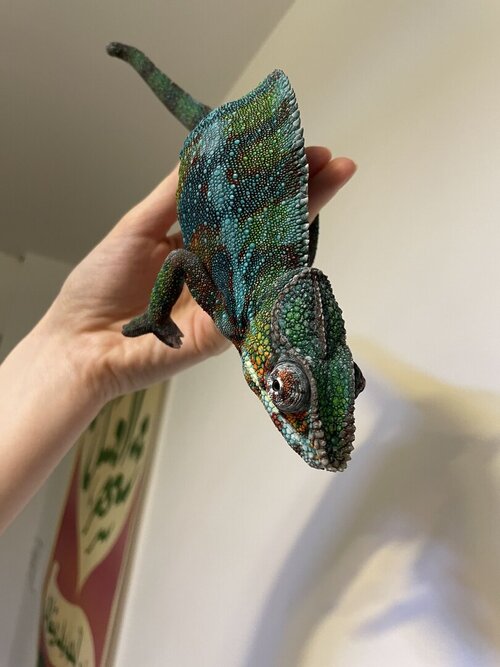Hello Cham owners!
I hope everyone has had a nice weekend.
My much loved male panther has started missing his food over the past couple of months.
Problem:
His tongue seems to extend and retract properly in a muscular sense, it just misses the bug by about 1-2cm. He climbs closer to the bugs to compensate but he still misses unless he is approx 10cm or closer to the bug.
Nothing in his environment has changed. I know aim can sometimes be a diet issue, he has always had the Repashy supplement regime which I thought was meant to be good quality? Happy to change if there is a better one.
I have filled in the husbandry form below and attached photos.
If anyone has time to help I would REALLY appreciate it, he had a sad start in life with every reason to hate humans, however he is the sweetest character! @MissSkittles @Beman @kinyonga
Katy
Husbandry Form
Your Chameleon - Male, panther chameleon, approx 2 years. Deformities since baby: missing last third of his tail, deformed tail bone & multiple bite scars. I rescued him as a juvenile from a horrible breeder who was going to put him in the bin!
Appearance and behaviour seem fine, no changes.
Handling - Only when he wants interaction, never forced. He is very friendly, most days he will voluntarily come out of his enclosure and climb onto me. He then explores my hanging house plants. I limit the time out of enclosure to ensure he gets enough time under enclosure lights.
Feeding -: Staple: dubias, silkworms (silkworms have been out of stock past 4 weeks) Secondary: BSFL, waxworms, morioworms
Feeding 3 x per week in a cup either held by me or attached inside his enclosure
Gut loading - Silkworms: mulberry leaf paste. Dubia: mostly carrots & sweet potatoes, also green beans, kale, oranges.
Supplements - Daily: Repashy SuperCal no d3, 1st & 3rd Sundays of month: Repashy Calcium plus LoD
Watering - Mistking system, 2 mistking nozzles, each one placed in top front corner
Fecal Description - creamy white urate, sometimes orange area, along with semi-solid brown poop.
Cage Type - customised reptibreeze XL, 61x61x126, acrylic panels on back & sides & top door, mesh lower door & mesh ceiling for chimney effect. No substrate, water drains through holes drilled into the base.
Plants - 2x ferns, 1x maranta, 1 x pathos, 2 bromeliads, a few air plants. 3 key pots have been covered with reptile bark to disguise the plant pot.
Lighting -
Light Schedule - UVB & basking operate 8am - 8pm, plant light 9am-5pm
Temperatures -
30C / 86F basking temp controlled via thermostat
20-22C/ 68-72F ambient measured at lower end of cage
Humidity -
Measured with a Govee digital hydrometer & phone app, attached to enclosure back wall
Daytime: average 69% (Lowest 55% Highest 82%)
Nightime: average 76% (Lowest 68% Highest 87%)
Placement - low traffic room 1.2 metre off the floor
Photos:
I hope everyone has had a nice weekend.
My much loved male panther has started missing his food over the past couple of months.
Problem:
His tongue seems to extend and retract properly in a muscular sense, it just misses the bug by about 1-2cm. He climbs closer to the bugs to compensate but he still misses unless he is approx 10cm or closer to the bug.
Nothing in his environment has changed. I know aim can sometimes be a diet issue, he has always had the Repashy supplement regime which I thought was meant to be good quality? Happy to change if there is a better one.
I have filled in the husbandry form below and attached photos.
If anyone has time to help I would REALLY appreciate it, he had a sad start in life with every reason to hate humans, however he is the sweetest character! @MissSkittles @Beman @kinyonga
Katy
Husbandry Form
Your Chameleon - Male, panther chameleon, approx 2 years. Deformities since baby: missing last third of his tail, deformed tail bone & multiple bite scars. I rescued him as a juvenile from a horrible breeder who was going to put him in the bin!
Appearance and behaviour seem fine, no changes.
Handling - Only when he wants interaction, never forced. He is very friendly, most days he will voluntarily come out of his enclosure and climb onto me. He then explores my hanging house plants. I limit the time out of enclosure to ensure he gets enough time under enclosure lights.
Feeding -: Staple: dubias, silkworms (silkworms have been out of stock past 4 weeks) Secondary: BSFL, waxworms, morioworms
Feeding 3 x per week in a cup either held by me or attached inside his enclosure
Gut loading - Silkworms: mulberry leaf paste. Dubia: mostly carrots & sweet potatoes, also green beans, kale, oranges.
Supplements - Daily: Repashy SuperCal no d3, 1st & 3rd Sundays of month: Repashy Calcium plus LoD
Watering - Mistking system, 2 mistking nozzles, each one placed in top front corner
8:20am = 2min
1pm = 1min (to keep daytime humidity above 50%)
8:15pm = 3min
1am = 2min
5am = 2min
Fecal Description - creamy white urate, sometimes orange area, along with semi-solid brown poop.
Cage Type - customised reptibreeze XL, 61x61x126, acrylic panels on back & sides & top door, mesh lower door & mesh ceiling for chimney effect. No substrate, water drains through holes drilled into the base.
Plants - 2x ferns, 1x maranta, 1 x pathos, 2 bromeliads, a few air plants. 3 key pots have been covered with reptile bark to disguise the plant pot.
Lighting -
- UVB: Arcadia ProT5 22" with Arcadia Forest 6% bulb.
- Basking: 100 watt ExoTerra basking bulb
- Plant grow light - generic one
Light Schedule - UVB & basking operate 8am - 8pm, plant light 9am-5pm
Temperatures -
30C / 86F basking temp controlled via thermostat
20-22C/ 68-72F ambient measured at lower end of cage
Humidity -
Measured with a Govee digital hydrometer & phone app, attached to enclosure back wall
Daytime: average 69% (Lowest 55% Highest 82%)
Nightime: average 76% (Lowest 68% Highest 87%)
Placement - low traffic room 1.2 metre off the floor
Photos:
- Enclosure
- Basking branch with lamp & probe
- Thermostat set up
- Repashy food supplements
Attachments
-
 thumbnail_IMG_6096.jpg80.4 KB · Views: 26
thumbnail_IMG_6096.jpg80.4 KB · Views: 26 -
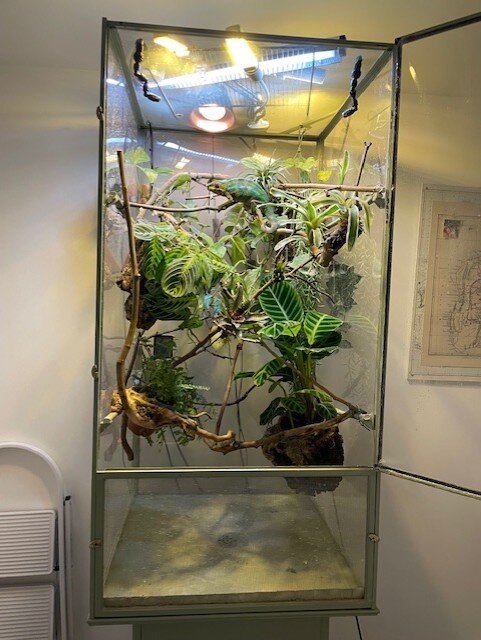 thumbnail_IMG_6045.jpg84 KB · Views: 22
thumbnail_IMG_6045.jpg84 KB · Views: 22 -
 thumbnail_IMG_6047.jpg123.2 KB · Views: 22
thumbnail_IMG_6047.jpg123.2 KB · Views: 22 -
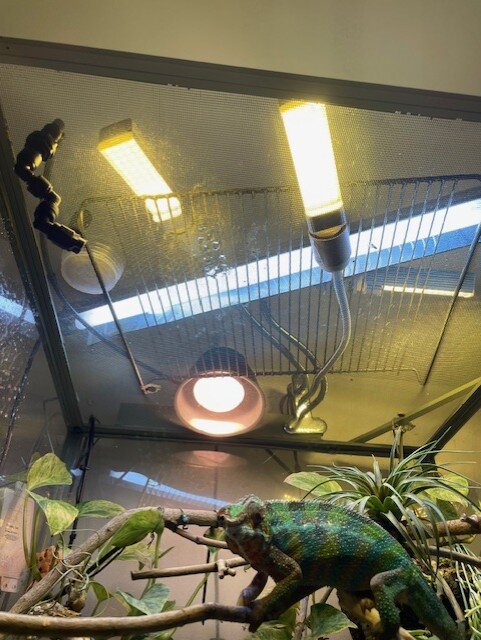 thumbnail_IMG_6054.jpg96.2 KB · Views: 20
thumbnail_IMG_6054.jpg96.2 KB · Views: 20 -
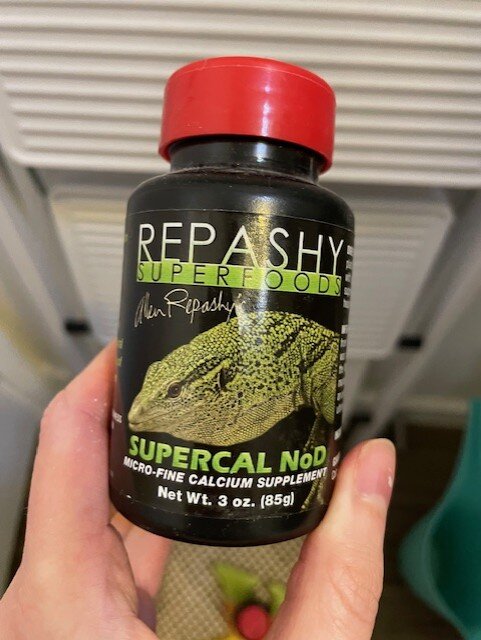 thumbnail_IMG_6083.jpg73.6 KB · Views: 26
thumbnail_IMG_6083.jpg73.6 KB · Views: 26 -
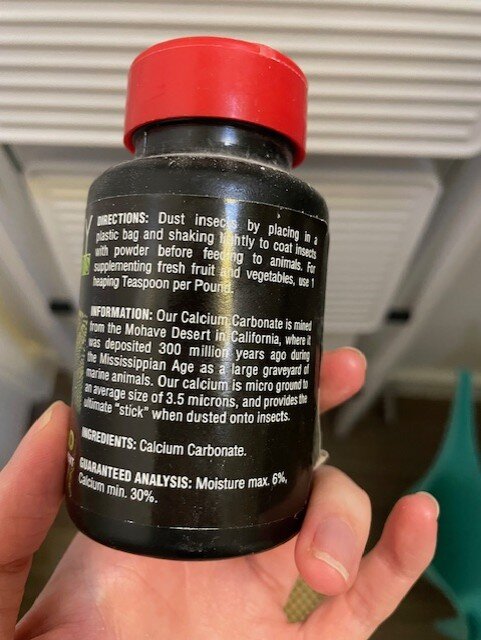 thumbnail_IMG_6084.jpg77.5 KB · Views: 21
thumbnail_IMG_6084.jpg77.5 KB · Views: 21 -
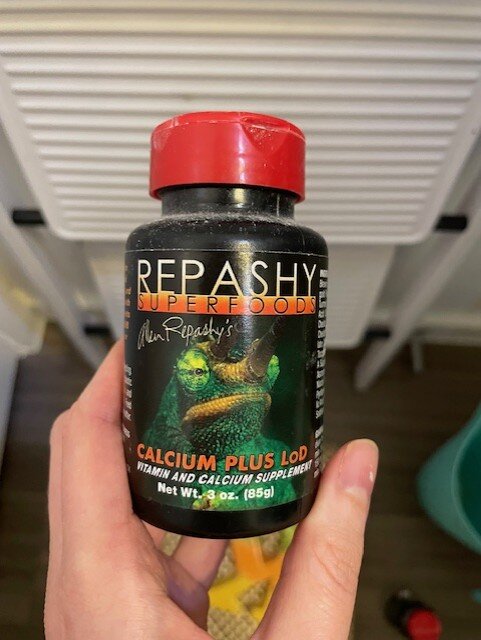 thumbnail_IMG_6085.jpg66.7 KB · Views: 32
thumbnail_IMG_6085.jpg66.7 KB · Views: 32 -
 thumbnail_IMG_6086.jpg79.2 KB · Views: 15
thumbnail_IMG_6086.jpg79.2 KB · Views: 15 -
 thumbnail_IMG_6088.jpg71.2 KB · Views: 24
thumbnail_IMG_6088.jpg71.2 KB · Views: 24 -
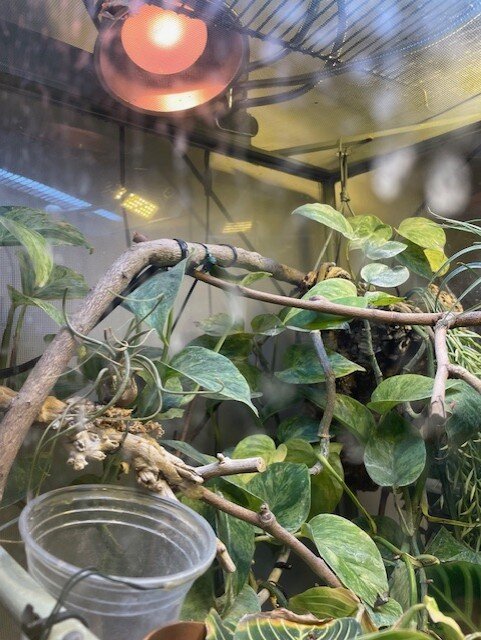 thumbnail_IMG_6090.jpg104.1 KB · Views: 22
thumbnail_IMG_6090.jpg104.1 KB · Views: 22


